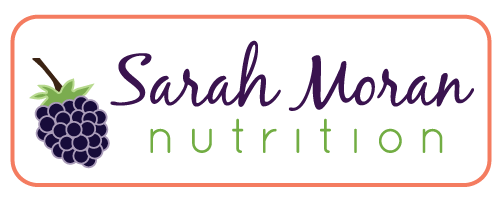 Using whole grain flours in your cooking isn't as difficult as many people think. I have found, in most cases, that you can simply substitute in the whole grain version with great results! When it comes to wheat flour, use regular whole wheat flour in heartier products like bread and biscuits. If you're making a more delicate food, like waffles, cookies, or a cake, opt for whole wheat pastry flour. It's made from a softer wheat variety, giving the flour a softer texture. Also, be sure to store your flour in the refrigerator or freezer to keep it from spoiling, because whole grain flours are not as shelf stable as refined flours.
Using whole grain flours in your cooking isn't as difficult as many people think. I have found, in most cases, that you can simply substitute in the whole grain version with great results! When it comes to wheat flour, use regular whole wheat flour in heartier products like bread and biscuits. If you're making a more delicate food, like waffles, cookies, or a cake, opt for whole wheat pastry flour. It's made from a softer wheat variety, giving the flour a softer texture. Also, be sure to store your flour in the refrigerator or freezer to keep it from spoiling, because whole grain flours are not as shelf stable as refined flours.
In this recipe, I use spelt, an ancient strain of wheat. If you can't find it or want to make it with traditional whole wheat pastry flour I'm sure it would work just as well.
Apple Spice Spelt Pancakes
makes 8-10 pancakes
Ingredients
1 cup whole spelt flour
1 teaspoon aluminum-free baking powder
1/2 teaspoon baking soda
1/4 teaspoon salt

1 teaspoon ground cinnamon
1/2 teaspoon ground nutmeg
1/4 teaspoon ground ginger
1/4 teaspoon ground clove
3/4 cup organic milk
1 large egg, beaten
1/2 tablespoon honey
1 apple, unpeeled and grated
Directions
1. In a large bowl, combine flour, baking powder, baking soda, salt, cinnamon, nutmeg, ginger, and clove. Mix with a whisk to distribute ingredients.
2. Create a well in the dry ingredients and add milk, egg, and honey. Whisk slowly, starting from center, until ingredients are mixed and there are no large lumps. Be careful not to over-mix.
3. Carefully fold grated apple into batter.
3. Oil a griddle or large frying pan and warm over medium heat. Once the pan is hot, add batter using a 1/4 cup measuring cup. Cook on one side until the tops are bubbly and the edges are dry. Then, flip and cook the other side until browned.
4. Serve with your favorite toppings like maple syrup, fresh fruit, or nuts*.
*If everyone you're serving can agree, feel free to add your favorite chopped nuts, such as walnuts or pecans, to the batter before cooking.
 To finish up this week of the challenge, I wanted to say a little something about oats. Oats are a yummy grain that can be great for you. They're a good source of fiber, phosphorus, and selenium and a very good source of manganese. Plus, they're filling and easy to cook. The problem is, they often show up on people's plates in highly processed forms, such as granola bars and instant oatmeal packets that are full of additives. The best way to enjoy your oats is the regular/rolled and steel-cut varieties, which you can buy in bulk for cheap. They do take longer to cook, but an easy way to get around this inconvenience is a slow-cooker. Cook them on low overnight and you will have breakfast ready when you wake up in the morning. You can get started with my recipe, but once you know the basics you can change it up to fit your tastes. Another option is to top plain oatmeal with an egg for a savory version.
To finish up this week of the challenge, I wanted to say a little something about oats. Oats are a yummy grain that can be great for you. They're a good source of fiber, phosphorus, and selenium and a very good source of manganese. Plus, they're filling and easy to cook. The problem is, they often show up on people's plates in highly processed forms, such as granola bars and instant oatmeal packets that are full of additives. The best way to enjoy your oats is the regular/rolled and steel-cut varieties, which you can buy in bulk for cheap. They do take longer to cook, but an easy way to get around this inconvenience is a slow-cooker. Cook them on low overnight and you will have breakfast ready when you wake up in the morning. You can get started with my recipe, but once you know the basics you can change it up to fit your tastes. Another option is to top plain oatmeal with an egg for a savory version.
 When making the change to whole grains, a simple switch you can make is to use whole grain pasta. Nowadays, not only can you buy whole wheat varieties, but other grains are being used too, such as spelt, kamut, and even brown rice. Some people might be worried about the taste or texture of whole grain pastas compared to those made with refined flour. However, it has been my experience that most people don't see a difference when they switch over and, if anything, find that the whole grain pastas have a heartier texture. Another plus is that dried pasta is a cheap and quick meal that can be made on a busy weeknight and can be totally transformed depending on what toppings you use. It can also be added to soups or used in a casserole (lasagna anyone?). If you're still unsure, try mixing refined and whole grain pastas 50/50 in a dish and see how you like it. This can help you transition to eating only whole grain pastas by gradually increasing the amount of whole grain and decreasing the amount of refined pasta.
When making the change to whole grains, a simple switch you can make is to use whole grain pasta. Nowadays, not only can you buy whole wheat varieties, but other grains are being used too, such as spelt, kamut, and even brown rice. Some people might be worried about the taste or texture of whole grain pastas compared to those made with refined flour. However, it has been my experience that most people don't see a difference when they switch over and, if anything, find that the whole grain pastas have a heartier texture. Another plus is that dried pasta is a cheap and quick meal that can be made on a busy weeknight and can be totally transformed depending on what toppings you use. It can also be added to soups or used in a casserole (lasagna anyone?). If you're still unsure, try mixing refined and whole grain pastas 50/50 in a dish and see how you like it. This can help you transition to eating only whole grain pastas by gradually increasing the amount of whole grain and decreasing the amount of refined pasta. Making a grain salad is a versatile method for preparing and serving your favorite whole grains. They can include fruits, vegetables, spices, herbs, beans, and meats and can be served hot or cold. Also, you can use them as your main dish or a side and they work great as leftovers because the flavors meld together even more while it hangs out in fridge. I came up with this recipe as my last hurrah for winter, incorporating some of my favorite cold weather veggies. Enjoy!
Making a grain salad is a versatile method for preparing and serving your favorite whole grains. They can include fruits, vegetables, spices, herbs, beans, and meats and can be served hot or cold. Also, you can use them as your main dish or a side and they work great as leftovers because the flavors meld together even more while it hangs out in fridge. I came up with this recipe as my last hurrah for winter, incorporating some of my favorite cold weather veggies. Enjoy!
 Believe it or not, popcorn is a whole grain. However, it gets a lot of flack because it’s usually covered with too much salt and butter. It’s a situation we see quite often, where the food itself is not unhealthy, but the preparation method or toppings take it to a bad place. As with any food, the best way to eat popcorn is to start as close to the raw ingredient as possible so you know what’s going into it. I prepare my popcorn using an air popper. If you don’t have one, they are quite affordable. Mine cost me about $20 and if you eat popcorn often, you will save money in the long run because you will only be paying for the unpopped kernels rather than all of the processing and packaging that goes into microwave varieties. Plus you only need a small amount of kernels (about 2 tablespoons) for a hefty serving. Then, you can add your own toppings like your favorite herbs and spices or grated parmesan. Here’s to healthy snacking!
Believe it or not, popcorn is a whole grain. However, it gets a lot of flack because it’s usually covered with too much salt and butter. It’s a situation we see quite often, where the food itself is not unhealthy, but the preparation method or toppings take it to a bad place. As with any food, the best way to eat popcorn is to start as close to the raw ingredient as possible so you know what’s going into it. I prepare my popcorn using an air popper. If you don’t have one, they are quite affordable. Mine cost me about $20 and if you eat popcorn often, you will save money in the long run because you will only be paying for the unpopped kernels rather than all of the processing and packaging that goes into microwave varieties. Plus you only need a small amount of kernels (about 2 tablespoons) for a hefty serving. Then, you can add your own toppings like your favorite herbs and spices or grated parmesan. Here’s to healthy snacking! We hear lots of talk about variety when it comes to our fruits and veggies. When you're eating a variety of foods you're likely to have a more balanced diet that provides all of the vitamins and minerals you need. I think we should extend this philosophy to the grains we eat as well. Most of us eat only a few grains including wheat, corn, and oats. However, there are so many different grains out there, such as kamut, farro, quinoa, and teff, and they are becoming more readily available all the time. These are often referred to as ancient grains because they have been around for thousands of years and have not been subjected to the industrial breeding that the more predominant grains have. This means that they have varied flavor, texture, and nutrient profiles, which can also help to make your meals more interesting. If you'd like a little background on the origin and flavor properties of some of these grains, be sure to check out
We hear lots of talk about variety when it comes to our fruits and veggies. When you're eating a variety of foods you're likely to have a more balanced diet that provides all of the vitamins and minerals you need. I think we should extend this philosophy to the grains we eat as well. Most of us eat only a few grains including wheat, corn, and oats. However, there are so many different grains out there, such as kamut, farro, quinoa, and teff, and they are becoming more readily available all the time. These are often referred to as ancient grains because they have been around for thousands of years and have not been subjected to the industrial breeding that the more predominant grains have. This means that they have varied flavor, texture, and nutrient profiles, which can also help to make your meals more interesting. If you'd like a little background on the origin and flavor properties of some of these grains, be sure to check out  Using whole grain flours in your cooking isn't as difficult as many people think. I have found, in most cases, that you can simply substitute in the whole grain version with great results! When it comes to wheat flour, use regular whole wheat flour in heartier products like bread and biscuits. If you're making a more delicate food, like waffles, cookies, or a cake, opt for whole wheat pastry flour. It's made from a softer wheat variety, giving the flour a softer texture. Also, be sure to store your flour in the refrigerator or freezer to keep it from spoiling, because whole grain flours are not as shelf stable as refined flours.
Using whole grain flours in your cooking isn't as difficult as many people think. I have found, in most cases, that you can simply substitute in the whole grain version with great results! When it comes to wheat flour, use regular whole wheat flour in heartier products like bread and biscuits. If you're making a more delicate food, like waffles, cookies, or a cake, opt for whole wheat pastry flour. It's made from a softer wheat variety, giving the flour a softer texture. Also, be sure to store your flour in the refrigerator or freezer to keep it from spoiling, because whole grain flours are not as shelf stable as refined flours.
 To begin the
To begin the